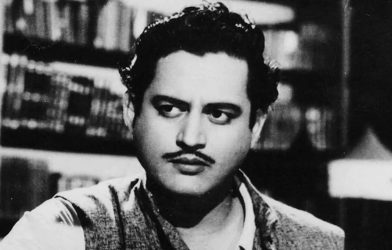
Mainstream Bollywood today has acknowledged the queer disposition in the country and has attempted ‘queer representation’ on the Hindi screen on multiple occasions. Some creative choices around this ‘representation’ were progressive, others perfunctory, and the rest an insidious attempt at homophobia and ‘queer humor’ appealing to only conservative heterosexual crowd.
But there are some Hindi films, apart from what one would consider mainstream LGBTQ movies like Badhai Do or Aligarh, that have no explicit queerness but reflect fervently and intuitively on being ‘queer’. They may be relatable to the queer crowd or they may have queer symbolisms – they may simply entertain the queer crowd or it may simply ring as ‘not-heteronormative’. These films can largely teach us that being a part of the LGBTQIA+ community isn’t just about sexual preferences or gender fluidity, it’s about ‘feeling different’ and how this separation from the ‘normal’ isn’t necessarily bad. Let’s jump into some non-queer Queer films with quick spoiler-free summaries and why they are queer.
A Thursday
What’s it about? — A kindergarten nanny takes some children hostage one fine Thursday and threatens the police to comply with her demands. She demands the arrests of some men and makes preposterous mandates to the extent the matter becomes national news. Naina, the abductor, clearly has an acrimonious incentive for this radical yet composed and calculated move – a suspense with a social-justice twist worth the watch.
Why is it queer? —- A large theme of the film is ‘non-cooperation’ and getting things done using ‘fear’. Though Naina never really intends on hurting the children, she does use their innocence as a weapon to give herself ‘a voice’ – despite her ethically gray ways, the film’s essence lies in the fact that — unless you use unorthodox means, unless you ‘scream in people’s ears’ as she puts it, you are not heard. This film hits the queer bull’s eye because often the queer sentiment in India is suppressed, invalidated and trivialized. Though abducting children for that issue isn’t the solution, the way Naina is madly driven heralds the consequences of ostracizing minorities.
Sonu Ki Titu Ki Sweety
What’s it about? — When Titu decides to get married, Sonu, his best friend, gets envious and suspicious of Titu’s bride, Sweety, who has some tricks up her sleeve. The film is largely a rivalry between Sweety and Sonu over Titu’s affection and attention and is a fun watch with a blend of masala and family drama.
Why is it Queer? — Though Sonu and Titu are straight ‘best friends’, practically brothers, Sonu’s possessive, protective and indulgent approach to Titu’s marriage comes off as very queer. Queer-baiting them was also a huge cherry on the cake for me while watching this film. Sonu says in the initial scenes of the movie that he, as a roommate, can provide Titu with everything that a girl can provide apart from sex. Throughout the film, he acts like the bisexual lover of a third-wheel in the triangle. Nushrat Bharucha’s character also plays the ‘femme fatale’ pretty seductively – a total badass icon for the queers.
Barfi
What’s it about? — When Barfi, a deaf and mute guy is dejected due to the aftermath of a break-up with his lover, he meets an autistic girl and forms a connection. Spread across Kolkata and Darjeeling, Barfi is a fantastic, aesthetic-laden, musical production that traces the life of these three people who strive to find love and undergo heart-shattering situations.
Why is it queer? — Not only does the disability factor in Barfi represent a ‘major obstacle’ to survive in the ‘normal world’ which relates to queerness, Barfi also spreads the message of ‘Love is Love’. It also depicts Barfi’s juggling of Jhilmil and Shruthi, which feels somewhat like a bisexual struggle to me. Shruthi also becomes this ‘heteronormative figure’ that the queer person cannot have. Though Shruthi loves him back, she cannot act on it – and Jhilmil then symbolizes the queer love which follows. Regardless, the pain of unrequited love flows subtly over the filmscape.
Dolly Kitty Aur Woh Chamakte Sitare
What’s it about? – Set in modern-day Noida, Kitty comes from rural Bihar to live with her cousin Dolly’s family in hopes of establishing herself in the city. Dolly’s husband makes moves on Kitty, making her uncomfortable but Dolly, who has lost her sexual appetite, invalidates and laughs Kitty’s concerns off. The film is largely about both the women trying to find sexual catharsis and gendered dignity in the very dark-patriarchal world which they live in
Why is it queer? – The overall sexual struggle feels very queer. The insecurities, denials and ‘shame’ the protagonists have, seems relatable. Dolly’s younger son is shown to be interested in cross-dressing and that gets him in trouble. Dolly’s fight as a mother to understand and defend her son against the binary world is ‘queer cheer’; a lesson of sorts for parents on raising ‘different kids’.
Talaash
What’s it about? – Bombay inspector Suri tries to solve a mysterious case of cars driving off a cliff after drivers see something ‘mysterious’ on the road. His investigation leaves him intermingled with a brothel and one sex-worker named ‘Rosie’ . Rosie and Suri develop an obscure bond, non-physical yet intimate. As Suri reaches to the bottom of the matter, which involves money-laundering, sexual abuse and murder, the great revelation of a ‘ghost’ comes to light.
Why is it queer? – Well, Muskaanein Jhooti Hai, for starters. The direction, mood and emotion of the film is nocturnally spooky. The aesthetic of prostitution, ‘down-market Bombay’ and the gloominess of the film reminds me of a time when the queer soul is ‘lost and unknown to itself’. Suri, who grieves of a lost son and a broken marriage and Rosie, both speak with a melancholic philosophy. The end however, unravels a major social theme, one which scrutinizes identity, security and social justice.
Shaadi Ke Side Effects
What’s it about? – Sid and Trisha try to manage their marriage after their daughter is born, aiming to find both personal and marital contentment amidst changing situations. Sid deceives Trisha about having ‘work’ and spends time alone in his studio or a hotel, seeking a break from family life that revolves around their baby. The film portrays the challenges faced by married couples, leading to disillusionment and a routine marriage, as Trisha and Sid work towards finding a compromise.
Why is it queer? – In all fairness, it is about a heterosexual couple and their very gendered problems. But from the perspective of Farhan Akhtar’s budding musician/young father Sid, the film is queer. In one scene, he actually puts a balloon under his shirt and in all seriousness pretends to be pregnant. In another, he feels inadequate because he cannot tell what the baby wants like Trisha can. Overall, he feels a combination of rejection, incompetence and ignorance – and thus he lies and pretends to be someone he is not – does that sound familiar?









